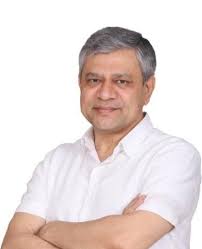
New DelhiThe Union Cabinet, chaired by Prime Minister Narendra Modi, has approved four major railway projects worth an estimated ₹12,328 crore under the Ministry of Railways. These projects aim to enhance seamless movement of both passengers and freight while reducing logistics costs and dependence on fuel imports.
The approved projects include the Deshalpar–Hajipir–Luna and Vayor–Lakhpat new line in Gujarat, the third and fourth line between Secunderabad (Sanathnagar)–Wadi spanning Karnataka and Telangana, the Bhagalpur–Jamalpur third line in Bihar, and the Furkating–New Tinsukia doubling project in Assam.
According to the ministry, these developments will significantly improve operational efficiency, reliability, and travel convenience while lowering CO2 emissions and creating nearly 251 lakh man-days of direct employment during the construction phase.
Strategic Connectivity in Gujarat’s Kutch
The new line in Kutch will add 145 route km and 164 track km to Gujarat’s existing railway network, at a cost of ₹2,526 crore, to be completed within three years. This project is of strategic importance as it will connect remote regions of the Rann of Kutch, benefitting 866 villages and nearly 1.6 million people. It will also boost tourism to heritage and religious sites including the Harappan site of Dholavira, Koteshwar Temple, Narayan Sarovar, and Lakhpat Fort. With 13 new stations planned, the line will further support the transport of salt, cement, coal, clinker, and bentonite.
Multi-Tracking Projects in Other States
The Secunderabad (Sanathnagar)–Wadi third and fourth line, spread over 173 km, will cost ₹5,012 crore and is expected to be completed in five years. The Bhagalpur–Jamalpur third line in Bihar, spanning 53 km, has a cost of ₹1,156 crore with a three-year timeline. The Furkating–New Tinsukia doubling project in Assam, covering 194 km, has been sanctioned at ₹3,634 crore with a four-year completion target.
Collectively, these multi-tracking works will enhance line capacity, reduce congestion, and expand connectivity to around 3,108 villages and nearly 4.7 million people, including the aspirational district of Kalaburagi in Karnataka.
Economic and Environmental Gains
The projects, aligned with the PM Gati Shakti National Master Plan, will add nearly 565 km to the Indian Railways network across 13 districts of five states. The additional capacity is expected to handle 68 million tonnes per annum (MTPA) of freight, particularly coal, cement, clinker, steel, fly ash, containers, fertilizers, petroleum products, and agricultural produce.
Railways, being an eco-friendly and energy-efficient mode of transport, will contribute to cutting logistics costs, saving 560 million liters of fuel, and reducing CO2 emissions by 3.6 million tonnes—equivalent to planting 14 crore trees.
By creating new jobs, improving supply chain efficiency, and boosting both passenger and freight services, these projects reflect the Prime Minister’s vision of “Atmanirbhar Bharat”, ensuring sustainable growth and regional development.